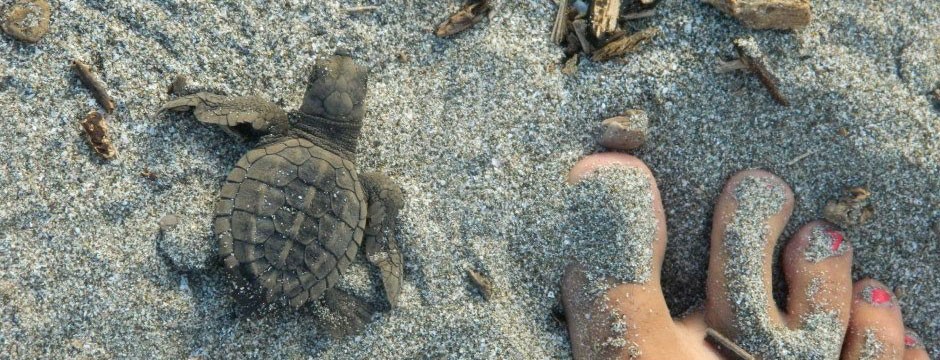The 5 main human actions that harm them
 On Earth, there are only seven species of sea turtles. Every year Costa Rica welcomes five of those species on its coasts: The Green, Hawksbill, Loggerhead, Olive Ridley and Leatherback. In fact, the Leatherback is the second biggest reptile in the world!
On Earth, there are only seven species of sea turtles. Every year Costa Rica welcomes five of those species on its coasts: The Green, Hawksbill, Loggerhead, Olive Ridley and Leatherback. In fact, the Leatherback is the second biggest reptile in the world!
Unfortunately, every species of sea turtle is endangered. There are several nature threats; a newly-hatched sea turtle faces many predators on the journey from its sandy birthplace to its new ocean home. Even those who make it safely to the ocean are confronted by countless predators waiting for their next delectable meal. However, these natural threats are part of the life-cycle and have always been part and parcel to their existence. On the contrary, the threats that cause sea turtles to be endangered are human-related.
The turtles are endangered because of the following reasons:
1. A Great Appetizer!
The turtles and their eggs are eaten by populations living on the coast as a cheap source of seafood. Eating the eggs considerably reduces the potential future sea turtle population. Furthermore, eating sea turtles seriously decreases the amount of sea turtles able to reproduce and has the side-effect of limiting genetic diversity.
2. A Nice Decoration!
Poachers are selling the turtle’s shell in order to create beautiful jewelry and luxury items. The black market’s effects on sea turtle populations is very difficult to gauge but the estimations are quite disturbing. In fact, the Hawksbill, prized by poachers for its beautiful gold and brown shell, is estimated to have had its population reduced by 90% over the past 100 years!
3. Our Favorite Vacation Spots!
The development of seaside resorts along the coasts disturb the nesting behavior of turtles. Moreover, coastal light pollution causes an affray to the turtles that can disorientate the babies when they hatch. Newborn sea turtles should be attracted by the reflection of the moonlight on the ocean’s surface. Instead, they are attracted by the bright lights of oceanside businesses in the opposite direction and eventually die there. Finally, all the beach activities represent a risk of destroying potential eggs nestled deep within the sand.
4. Victims of Sea Pollution!
Ocean pollution has a double impact. The first impact is on the turtles themselves, contracting diseases, swimming into the oil, etc. Second, ocean pollution negatively impacts their food supply. They eat contaminated jellyfish and other seafood, but can also end up eating plastic bags or other contaminants that are floating in the ocean which they can choke on or not digest properly.
5. Suffering from Global Warming!
Global warming increases the amount of storms and natural disasters that can destroy the nests and the turtles themselves. Moreover, the turtles and the eggs have not had sufficient time to adapt to rising ocean levels and this drastic change in environment can translate into increased sea turtle fatalities.
